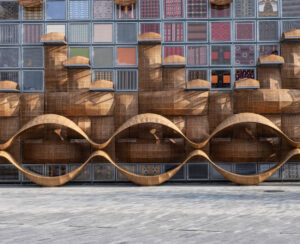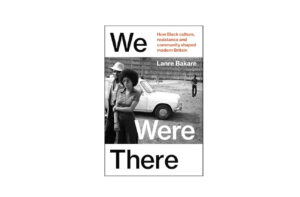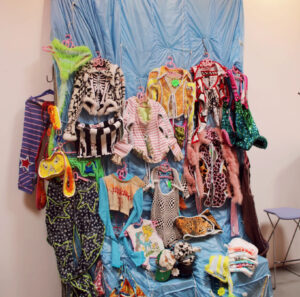When you step into the Philippine Pavilion at Expo 2025 in Osaka, Japan, you’re not just entering a structure—you’re entering a living, breathing tapestry. Aptly titled “Woven,” this architectural marvel is not merely constructed but consciously crafted, strand by strand, story by story. It’s a site of memory and imagination, a monument to both the tangible and intangible textures of Filipino life.
Curated by Carlo Calma Consultancy Inc. in collaboration with Japanese design studio Cat Inc., the pavilion acts as a nexus between heritage and innovation, nature and technology, community and cosmopolitanism. But “Woven” is more than just an exhibition space. It’s an invitation—an offering—to walk through centuries of Filipino ingenuity, animist reverence for land, postcolonial resilience, and artistic reinvention.
The Loom of the Land
At first glance, the pavilion’s form evokes the curvature of handwoven banig mats or the sinewed lines of hablon textiles. It doesn’t stand; it flows. The structure ripples like a sail catching the Amihan wind or a rice terrace contouring a mountain’s flank. The physicality of the space is alive with motion, echoing not only the techniques of weaving but the lifeways of an archipelago in perpetual motion—oceanic, tectonic, migratory.
This movement is intentional. In a nation composed of more than 7,000 islands, unity isn’t forged through rigidity, but flexibility—fluid borders, shifting coastlines, interconnected ecologies. The architectural language of “Woven” draws from this liminality. It recognizes how Philippine identity is shaped by convergence: indigenous and colonial, rural and urban, sacred and secular.
The materials used reflect this ethos of fusion. Indigenous fibers like piña, abaca, and raffia are incorporated alongside sustainable modern composites, emphasizing ecological consciousness. Bamboo frames are treated with contemporary engineering techniques, creating structures that are both resilient and gentle—flexible yet firm, much like the communities they represent.
Ancestral Threads, Futuristic Visions
But “Woven” is not a monument to nostalgia. It’s a forward-looking artifact, a “habitat of the future” grounded in ancestral wisdom. This convergence is perhaps most vivid in the pavilion’s interactive exhibits and responsive design elements. Digital projections dance along woven panels, telling myths of origin and migration. AI-assisted soundscapes interpret the movement of visitors into a symphony of natural and urban rhythms—from jungle birdsong to jeepney horns.
Visitors don’t merely observe; they activate the space. By stepping on pressure-sensitive panels or engaging with tactile walls embedded with sensors, one participates in the act of weaving—not just metaphorically, but literally, as data is transformed into generative visuals that animate the structure. The result is a dynamic installation where tradition is not preserved in amber but resurrected through participation.
This interactivity is central to Calma’s practice, which blends art, architecture, and performance. A trained architect and artist, Calma is known for collapsing the boundaries between built environment and narrative space. In “Woven,” his team advances this hybrid language: structures are not vessels for stories—they are stories. Architecture is not static—it is dramaturgy.
Architecture as Social Fabric
In its spatial logic, the pavilion does not prioritize hierarchy. There’s no grand staircase, no dominating axis, no “main” hall. Instead, spaces unfurl in a spiral of intimacy. You are guided not by walls but by pathways that mimic the meandering routes of barangay alleys or riverbanks. Seating areas appear like woven hammocks suspended in air, while communal zones invite rest, dialogue, and even impromptu performance.
The metaphor is clear: society is a weave, and strength lies in interconnectedness. It’s a rebuke of hyperindividualism, a reaffirmation of collective care.
Throughout the pavilion, this ethic is reinforced by a curatorial program that highlights the work of Filipino artists, artisans, and designers. From Mindanao basketry to Ifugao textile traditions, from Maranao brasswork to contemporary digital art, the Philippine Pavilion becomes a platform for showcasing not only what has been inherited but what is being innovated in real-time.
Particularly notable is the inclusion of works by women-led weaving communities from the Visayas and Northern Luzon, whose textiles have long carried the burden of cultural preservation without due recognition. Here, they are elevated to architectural scale—no longer marginal craft but central structure. Their labor, once relegated to domesticity, is now monumentalized in public space.
Diaspora and Displacement
For many Filipinos abroad—especially in Japan, which hosts a large overseas Filipino population—“Woven” serves as a temporal homecoming. But it’s not only a nostalgic echo. The pavilion confronts the complexities of diaspora: alienation, survival, hybrid belonging.
Inside, one room houses a digital loom that invites visitors to input their own migration stories. Threads of text—snippets of memory, names of places, languages spoken—are woven in real-time into a vast textile displayed on LED curtains. It’s a living archive, mapping the Filipino global footprint through personal testimony.
In doing so, the pavilion engages with the reality that Filipino culture is now as much a product of overseas lives as of homeland continuity. “Woven” does not seek to resolve this tension; it renders it visible, material, unignorable.
Environmental Design and the Ethics of Weaving
Beyond its cultural poetics, the structure also embodies a strong environmental ethic. Built with passive cooling in mind, the pavilion utilizes cross-ventilation, solar shading, and water catchment systems to reduce its ecological footprint. The roofing—made of interlaced panels derived from recycled plastics and natural fibers—acts as both sun filter and rain collector, channeling water to a lush central courtyard irrigated by harvested runoff.
This courtyard, filled with Philippine endemic flora such as Ylang-ylang, Banaba, and Katutubo species of ferns and orchids, is not decorative but functional. It filters air, cools surrounding zones, and offers refuge for pollinators. In a world of performative greenwashing, “Woven” is rooted in regenerative practice. It doesn’t just talk sustainability—it metabolizes it.
Even the process of construction reflected these ethics. Calma and his collaborators involved local Filipino artisans from start to finish. Woven modules were pre-fabricated in small community workshops across the Philippines before being shipped and assembled in Osaka. The project thus operates on both macro and micro scales—exemplifying national identity while directly empowering village economies.
A Pavilion Beyond the Expo
What happens after Expo 2025? Unlike many pavilions that are dismantled or discarded, “Woven” is designed for modular disassembly and reuse. Components will be re-integrated into schools, museums, and public spaces in the Philippines. In essence, the pavilion is not an endpoint but a circulating legacy. It returns to the communities that built it, enriched by global engagement.
This cyclical philosophy reinforces the pavilion’s thematic insistence on reciprocity: culture as something shared, not extracted; design as something continuous, not momentary.
The Power of Weaving
Ultimately, “Woven” operates on several interlacing registers. It is a celebration, a provocation, a performance, and a pilgrimage. It asks what it means to represent a nation not through monumentality but through intimacy, not through spectacle but through entanglement.
In our current age—marked by climate crisis, cultural erasure, and algorithmic disconnection—what “Woven” offers is a radically human vision. A vision in which stories are not flattened into soundbites but stretched into fabric. In which communities are not decorative themes but foundational threads. And in which design is not simply about beauty or utility, but about memory, ecology, and the shared work of becoming.
So when you step into the Philippine Pavilion in Osaka, understand that you are not stepping into a showcase—you are stepping into a weave. And every step you take adds another thread.
No comments yet.








